9 Types of Email to Keep Customers Engaged
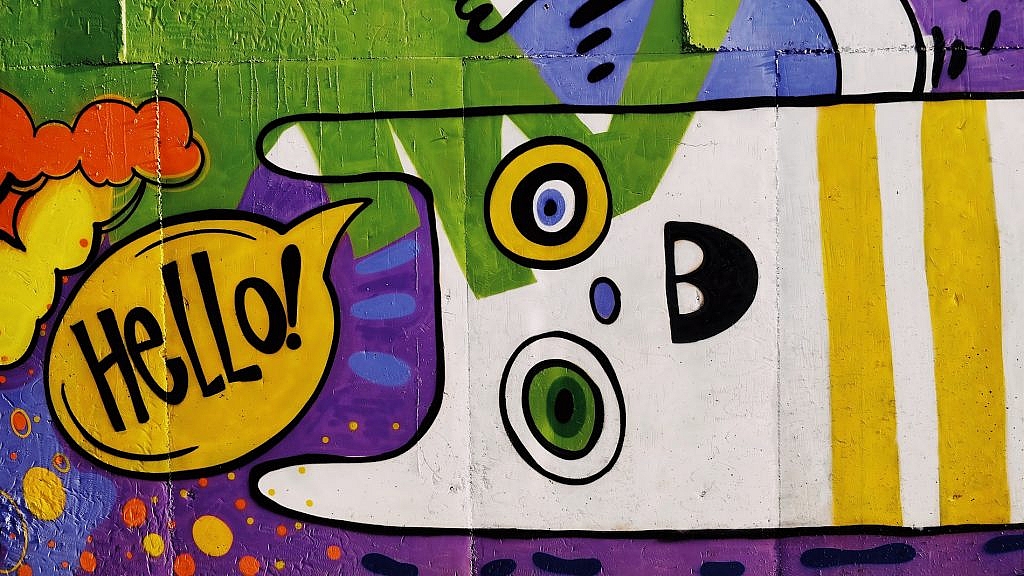
Between partnering with influencers for social media posts or optimizing landing pages for PPC campaigns, there are plenty of ways for marketers to promote and share products and services. But despite all the available options, there’s one channel that has stood the test of time.
Email marketing has always played an important role in reaching customers, and still does today. In fact, 60% of consumers say that email is their preferred channel for promotional messages.
Rather than having your promotions be mindlessly scrolled through, email marketing can better connect your brand with customers and subscribers. You’re more likely to grab the customer’s attention if you’re directly placed in their inbox, and with personalized content, you can easily increase conversion rates.
In this post, we’ll cover the 9 must-have emails to send to your customers and subscribers.
Types of Emails (+ Examples)
For your email marketing efforts to be most effective, you need a variety of content fit for different customer segments and different stages of the buyer’s journey. Having a variety will lead to better engagement with higher open and click-through rates, as well as the opportunity to increase sales through personalized offers and promotions.
Here are different types of email content to send, including examples from top-brands.
1. Welcome
Welcome emails have become a fixture in the customer experience. Customers now expect some type of welcome as soon as they make a purchase, sign up for a newsletter, start a product trial, or subscribe to your mailing list.
This email sets the stage for future interactions, and plays an important role in whether a customer will continue to engage with your brand or quickly unsubscribe. Customers who receive a welcome email show 33% more engagement.
Key elements of a welcome email include:
- Introducing your brand
- Thanking the customer for subscribing
- Providing guidance for what to do or expect next
Content will vary depending on the customer and the reason they are on your mailing list. For example, if you are welcoming a customer that signed up for a product trial, it would be helpful to include tips for using the product and a link to your FAQ.
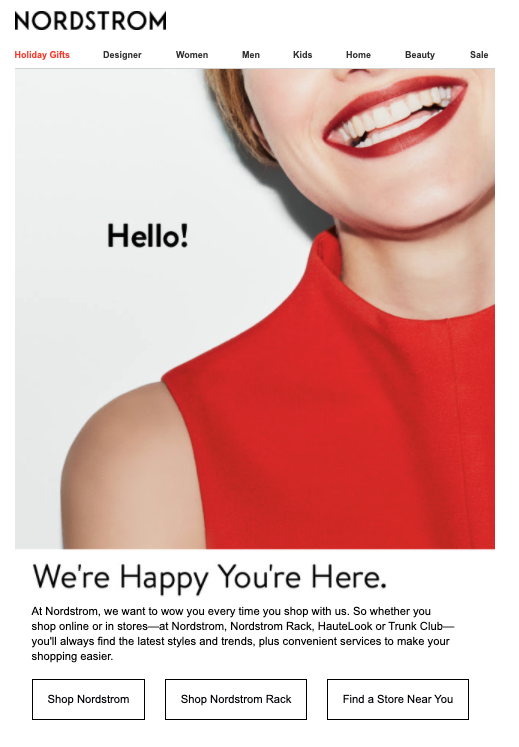
This welcome email from Nordstrom strikes the right balance of being welcoming, while also guiding customers to their store. It uses a high-quality image, a welcoming headline, and a straightforward call to action.
What works:
- Clean design with a concise headline
- Email is easy to navigate
- Provides call-to-action (CTA) links to guide customers
2. Promotional Offers
Promotional emails are exactly what the name says to be — an email to promote your brand. The focus of the email is the sale itself, and use content to motivate customers to make a purchase or sign up for a service.
There’s a variety of different promotional content you can use to make this email standout, including:
- Limited time offers
- Sale markdowns
- New arrivals and product launches
- Early sale access
- Seasonal/Holiday specials
While the content of this email can vary dramatically, the focus of conversion is still the same. There should be a clear, concise CTA that prompts customers to take advantage of the promotion. Be sure to make this offer worthwhile, and refrain from sending too many promotional emails as this will diminish the excitement of receiving a special offer.
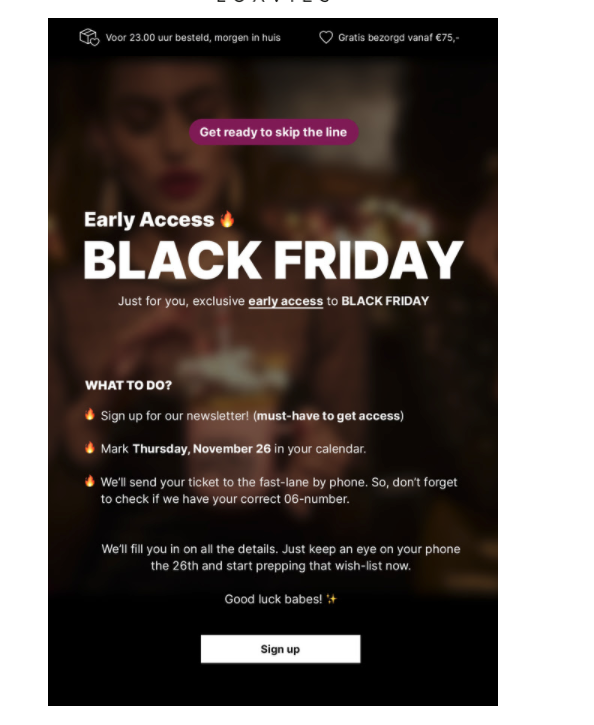
Clothing brand Loavies uses buzzwords like “early access” and “skip the line” to get subscribers excited, as well as offering a head start to their Black Friday sale. The email provides clear instructions for signing up, details on the discount, and a button to sign up directly.
What works:
- Gives subscribers an exclusive offer
- Uses FOMO (Fear of Missing Out)
- Provides easy-to-use CTA button for signing up
3. New Product Announcements
Announcing new products is a great way to keep customers engaged throughout the year, beyond their initial transactions or specific sale offers.
Product announcement emails can serve several purposes. These emails can be focused on promoting new arrivals with a CTA that encourages customers to make a purchase. It can also be used to re-engage customers, such as introducing new features that appeal to those on the verge of churning. Or it can simply be a way to keep your brand top-of-mind by announcing what’s new and generating excitement among customers.
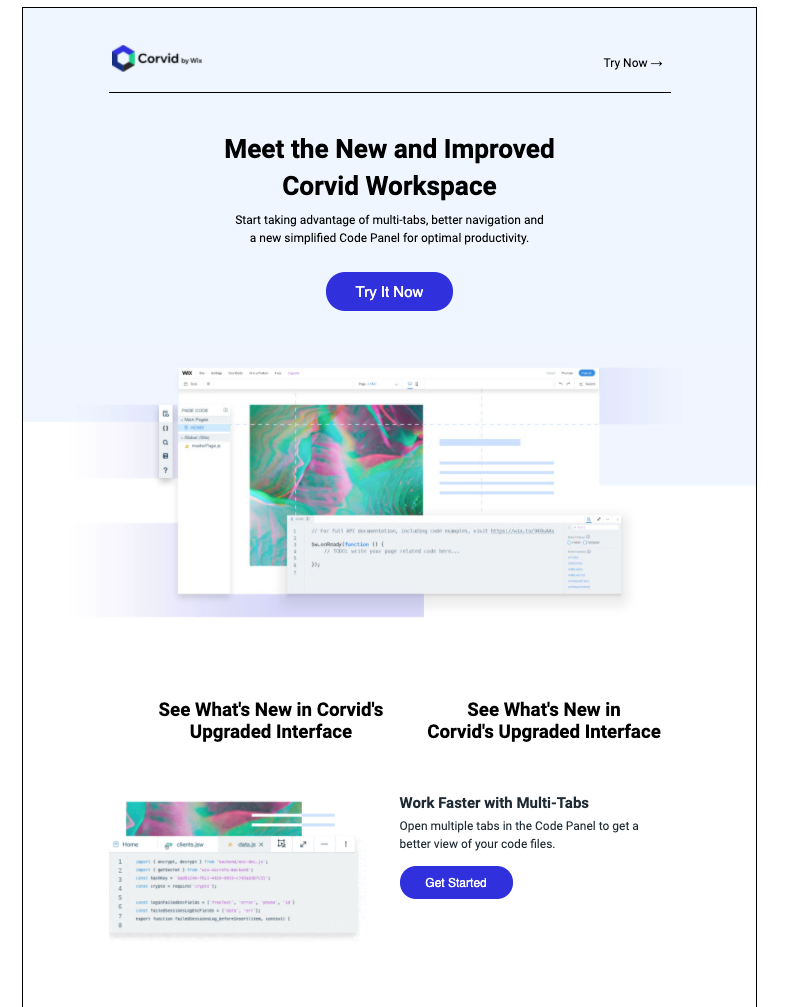
To announce their new updated product, Corvid by Wix sent an announcement email that takes customers through all their recent updates. The email includes images of the updates, lists of new functionalities, and CTA buttons for customers to try it out themselves.
What works:
- High-quality images of the updated product
- Multiple CTA buttons that guide users
- Shows value proposition of the update
4. Informational: Tips, Tutorials, Guides
It’s important to keep in mind that not every interaction you have with customers needs to be centered around driving sales. Constantly pushing promotions will disengage audiences, and eventually lead to your emails in a spam folder.
This is when informational emails are useful. Informational emails focus on building a relationship with customers and providing a great customer experience. This is becoming increasingly important as 73% of consumers say a good experience is key in influencing their brand loyalties.
Types of informational content can include:
- Insider tips
- Tutorials and How-to Guides
- Blogs and Articles
- Webinars
- Live events
- Quizzes, Polls, Surveys
- Inspirational Quotes
- Industry news
- Video series
Of course, your brand and products can be woven into this email content. However, the objective is to provide customers with something of value. The content should be high-quality and relevant. And most importantly, it should be interesting.
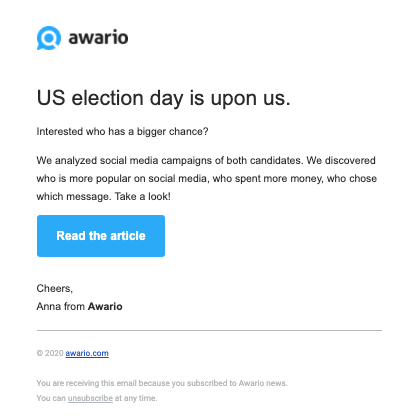
Awario gives unique insights with their weekly emails. The emails feature relevant content, while subtlety showcasing their brand’s social listening software capabilities. The content is refreshing as it uses a different approach to regular news digests and provides audiences with an interesting take on trending social media topics.
What works:
- Focuses on providing value, not promotions
- Uses captivating copy that leads to the article
- Simple and straightforward content
5. Upsell
Keep your existing customers coming back to your store with upsell emails.
Upsell emails are for your existing customers who might be interested in other offers from your brand. This email comes after the initial transaction, and there has been some time to build a relationship with the customer.
The content of these emails should not be over-promotional, as they are already your customers. You don’t want to come off as too pushy. Instead, think of upsell content as an opportunity to enhance their existing purchases.
This content can include:
- Bundle offers (i.e. “Complete your order with….”)
- Content around related products (i.e. “Frequently Bought Together” items)
- Personalized buying guides (i.e. “We think you’ll love these new arrivals”)
- Access to premium SaaS features (i.e. “Unlock new features”)
- Extend free trial periods (i.e. “Want your free trial extended?”)
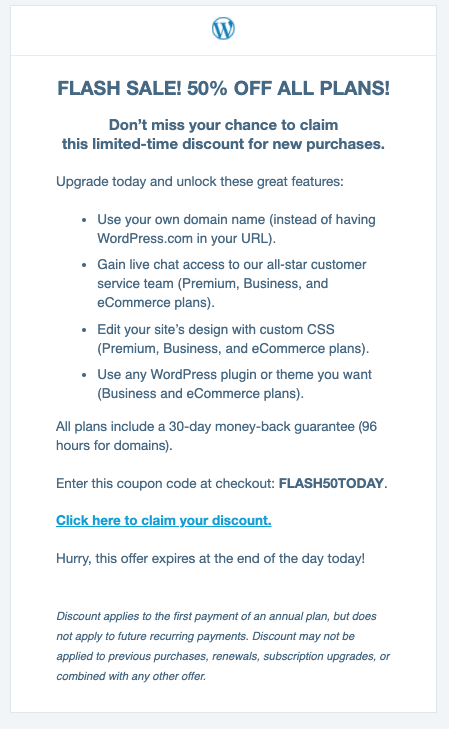
WordPress offered its existing customers a flash sale with a discount for upgraded plans. The email includes an exclusive discount, value proposition, and limited-time offer so customers were encouraged to act fast.
What works:
- Clearly states discount in the headline
- Highlights the new features available
- Creates sense of urgency to get the deal before it’s gone
6. Referral
Invite customers to become brand ambassadors with an affiliate or referral marketing program.
Referral emails are a win-win for you and your customers. You receive quality referrals and word-of-mouth promotions, and your customers are rewarded for their referral efforts with a commission or discount. This is also a great way to build brand loyalty.
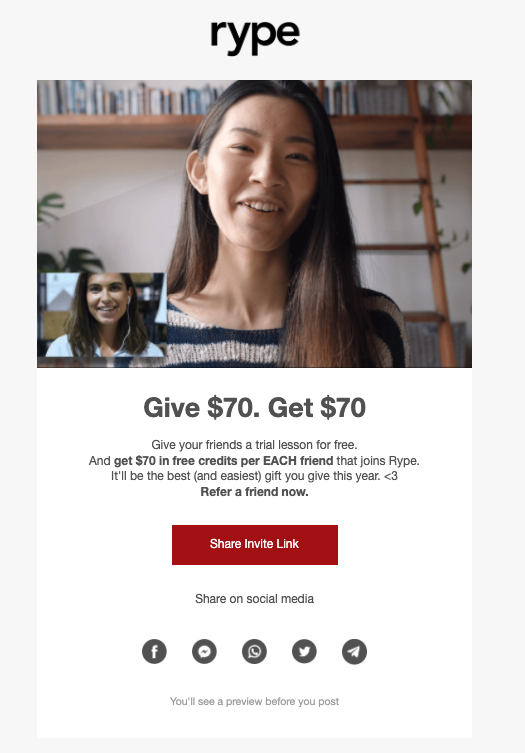
Rype does this by giving their existing customers $70 for every referral they send. The email is straightforward in communicating what they can earn and how they can get started, easily turning their customers into brand ambassadors.
What works:
- Offer is directly stated in the headline
- No frills, hassle-free process
- CTA is bold and stands out in the email
7. Customer Reviews
This is another win-win email. Asking customers for feedback is a great way to make customers feel valued and connected to your brand. This feedback is also very important to your overall growth efforts. Not only does it provide useful insights, it’s an essential marketing tool as 91% of people read online reviews before making a purchase.
Send review emails after key engagements with customers, such as following a completed transaction or positive customer service interaction. Aim to make the process simple and hassle-free so customers can review on the spot.

Amazon sends a review email shortly after an order has been delivered. The timing of this email is when the order is still fresh in the customers mind, but also gives them enough time to form an opinion so the feedback is more genuine.
What works:
- Easy to provide reviews and feedback
- Uses the headline to share customer appreciation
- Provides CTA to re-engage customers
8. Milestones Emails
Milestones are a great excuse to send an email and reconnect with your customers. And the best part, there’s plenty of different milestones you can acknowledge.
One option is celebrating a milestone for your company, such as the number of years in business or reaching a certain number of customers/subscribers. These emails are most effective when they include a message that is heartfelt and genuine, such as a letter written from the CEO or a video featuring employees.
Another option is a milestone for the customer, such as how many years they’ve been a customer/subscriber. It could also focus on their individual activity, such as how much they’ve ordered from your store or how much time they have used your app. These emails should be hyper-personalized email, and tailored to specifically to individual customers.

Duolingo sends their subscribers Weekly Reports, breaking down their progress in learning a new language. It includes stats like how many new words were learned and how many lessons were completed. The gamification of their email makes it engaging, and motivates the receiver to continue using their app in order to improve their reports.
What works:
- Fun and entertaining graphics
- Gamification to increase engagement
- Multiple CTAs to prompt subscribers
9. Customer Appreciation
Email is a great way to show customer appreciation. Customer appreciation emails can increase brand loyalty, repeat business, customer reviews and referrals, and is yet another opportunity to re-engage the customer.
These emails are a nice surprise, and since there isn’t a prompt like a sale or promotion, it comes across more genuine to the customer.
However, just because there isn’t a specific prompt, this doesn’t mean you shouldn’t be intentional with the messaging and purpose of the email. Sending an email without this is likely to lead to more unsubscribers than engaged customers.
Instead, make these emails personalized to your customers. Show appreciation, and mention what it means to your brand. Also consider offering something special as your way to say thanks for their business.
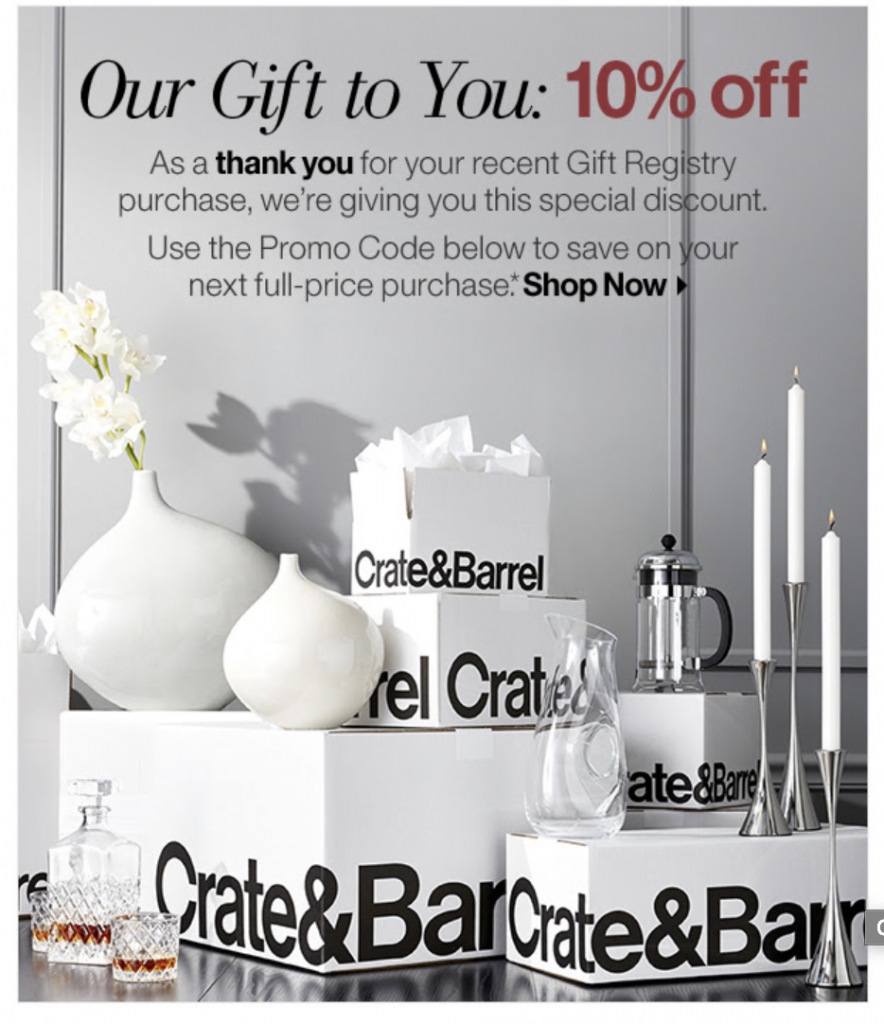
Crate & Barrel sends an email and discount code as a way to simply say thanks to customers. The email doesn’t feature any certain promotions or products. It is straightforward and transparent in its intentions.
What works:
- Highlights an attractive offer
- Focuses on customer appreciation
- Use key buzzwords like “our gift” and “special discount”
Start Sending Emails Today
Email is a great way to connect with your customers throughout their buying journey, and is also a great way to re-engage those customers who may have lost touch with your brand.
Whether it be through useful content or a tempting discount, focus on making each email worthwhile to the customer. Personalization, timing, and messaging are key to successful email campaigns.
Photo by Artem Bryzgalov on Unsplash